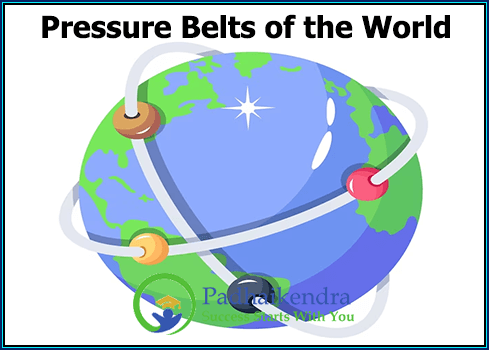The pressure belts of the world are areas of high and low atmospheric pressure that are caused by the circulation of air in the Earth’s atmosphere. There are several pressure belts that exist globally, including:
- Equatorial Low Pressure Belt: The Equatorial Low Pressure Belt is located near the equator and is caused by the rising of warm, moist air. The warm air rises, cools, and forms clouds, which leads to frequent rainfall in this region. This pressure belt is also known as the Intertropical Convergence Zone (ITCZ).
- Subtropical High Pressure Belt: The Subtropical High Pressure Belt is located between 20 and 30 degrees latitude in both hemispheres. It is caused by the sinking of cool, dry air from higher latitudes. This pressure belt is associated with dry and sunny weather conditions, and it is where many of the world’s deserts are located.
- Polar High Pressure Belt: The Polar High Pressure Belt is located near the North and South Poles and is caused by the sinking of cold, dense air. This pressure belt is associated with cold and dry weather conditions, and it is where polar regions experience their long winters.
- Subpolar Low Pressure Belt: The Subpolar Low Pressure Belt is located between 50 and 60 degrees latitude in both hemispheres. It is caused by the mixing of cold air from the Polar High Pressure Belt and warm air from the Subtropical High Pressure Belt. This pressure belt is associated with stormy weather conditions and is where many of the world’s mid-latitude cyclones are formed.
The pressure belts of the world play a significant role in global climate patterns and weather conditions. They also influence the movement of air masses and the formation of ocean currents. Understanding the pressure belts of the world is important for predicting weather patterns, managing agricultural and water resources, and for various activities such as aviation and shipping.





